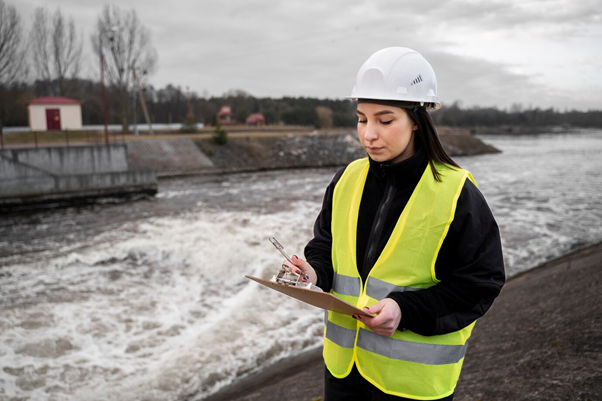
Access to clean water is often taken for granted, yet behind every functioning city lies a vast, complex system designed to collect, treat, and distribute this vital resource. As demand increases and climate patterns shift, traditional water infrastructure faces mounting pressure. The way water is managed today will determine the resilience of communities in the coming decades. But securing reliable water access is no longer just about expanding supply—it’s about rethinking how water moves, how it’s conserved, and how technology can enhance its distribution.
The Growing Challenge Of Water Scarcity
Across the world, water scarcity is becoming a reality that governments and industries can no longer ignore. Population growth, urban expansion, and erratic weather patterns are straining existing water sources, making efficiency a priority. Cities with outdated infrastructure experience high levels of water loss due to leaks, inefficient distribution networks, and contamination from aging pipelines. In many regions, the struggle to maintain access to clean water is no longer a distant issue but an immediate concern.
Climate change is intensifying the crisis, altering precipitation patterns and reducing the reliability of traditional water sources. Prolonged droughts, rising temperatures, and increased evaporation rates are making once-abundant water supplies unpredictable. This unpredictability forces cities and rural communities to rethink their strategies, moving away from reactive measures toward long-term, sustainable solutions.
As infrastructure ages, repair and replacement become critical. But upgrading water systems often involves large-scale excavation, disrupting communities, damaging ecosystems, and leading to unnecessary water waste. The challenge lies in modernizing these networks without adding to the problem.
Smarter Water Networks For A More Resilient Future
Innovations in water management focus not only on increasing supply but on optimizing what already exists. Smart meters, real-time monitoring systems, and AI-driven analytics help detect leaks before they become major failures. But beyond digital solutions, the physical infrastructure must evolve to support a more efficient water cycle.

The adoption of underground construction methods is playing a key role in ensuring that water distribution remains efficient without unnecessary disruption. Technologies like trenchless boring allow for the installation and repair of pipelines with minimal environmental impact, preserving natural landscapes while reducing the risk of contamination. By eliminating the need for open-trench excavation, these methods help maintain water quality while ensuring that infrastructure upgrades don’t interfere with daily life.
Cities are increasingly integrating automated water distribution systems, allowing utilities to adjust pressure and flow based on demand. These systems can reroute water efficiently during peak usage times, reducing the likelihood of shortages or pipeline stress. Coupled with underground infrastructure upgrades, this creates a network that is both responsive and resilient.
Reducing Water Waste Through Infrastructure Innovation
A significant percentage of treated water is lost before it even reaches consumers. Aging pipes leak millions of gallons annually, resulting in financial losses and placing additional stress on water sources. Conventional repairs require extensive digging, often leading to temporary water shutoffs and unnecessary wastage. This outdated approach is not sustainable for a world where every drop counts. By utilizing trenchless methods, water utilities can rehabilitate pipelines with minimal disruption. Instead of tearing up roads and landscapes, new pipes can be installed or repaired within existing networks, sealing leaks and extending the lifespan of infrastructure. This not only reduces waste but also lowers long-term maintenance costs, making water management more sustainable at every level.
In some cities, aging infrastructure results in water main breaks that waste thousands of gallons of potable water within minutes. These events not only disrupt supply but also cause damage to surrounding properties and streets. Implementing proactive infrastructure upgrades using trenchless technology can prevent these failures before they happen, ensuring long-term efficiency.
Protecting Natural Ecosystems While Expanding Supply
Expanding water infrastructure often comes at a cost to the environment. Construction projects near rivers, lakes, and wetlands can disrupt delicate ecosystems, displacing wildlife and altering water flow. Traditional excavation risks introducing contaminants into natural water sources, threatening both human populations and biodiversity. Trenchless technologies address these concerns by allowing pipelines to be installed beneath sensitive areas without disturbing the surface. This minimizes erosion, prevents sediment disruption, and reduces the risk of pollutants entering waterways. As sustainable development becomes a global priority, solutions that balance progress with environmental preservation will define the future of water management.
Furthermore, advancements in desalination technology and water recycling programs are helping expand supply without over-extracting from freshwater sources. Cities are beginning to integrate stormwater capture and wastewater treatment into their supply systems, creating a circular approach that maximizes water reuse. While these innovations improve sustainability, their implementation relies on infrastructure capable of handling the increased complexity of distribution and treatment processes.
The Intersection Of Urban Growth And Water Demand
Cities are expanding faster than ever, and water infrastructure must keep up.

As urban centers grow, demand for clean water rises, placing immense pressure on existing distribution systems. Forward-thinking urban planning must incorporate water efficiency into every stage of development, ensuring that new communities have access to reliable resources without overloading current networks. Modern engineering solutions make it possible to upgrade and expand water systems without bringing cities to a standstill. With trenchless boring and other underground installation methods, municipalities can modernize their infrastructure without disrupting traffic, businesses, or public spaces. This ensures that urban growth remains sustainable, preventing water shortages from becoming a barrier to development.
In addition, water-conscious urban design is becoming a focal point of planning strategies. Permeable pavement, green rooftops, and urban reservoirs are being incorporated into new developments to reduce runoff and enhance local water retention. These features lessen the burden on traditional water infrastructure while improving sustainability.
The Path Forward
The future of water management lies in a combination of technological innovation, infrastructure modernization, and sustainable practices. Smart monitoring systems will continue to optimize efficiency, but without durable and adaptable physical networks, even the most advanced digital solutions will fall short.
Water is a finite resource, but the way it is managed determines whether scarcity becomes a crisis or an opportunity for progress. By integrating advanced construction methods that prioritize conservation and efficiency, cities can secure water access for future generations. The challenge ahead is not just about maintaining supply—it’s about rethinking the entire system, ensuring that every step, from sourcing to distribution, is built to withstand the demands of a rapidly changing world. Water security is not a problem for the distant future—it is a challenge that demands immediate action. Through a combination of innovative construction, smart technology, and proactive conservation efforts, communities can create a resilient and sustainable approach to water management. Every infrastructure decision made today has the potential to shape the availability and quality of water for decades to come.



